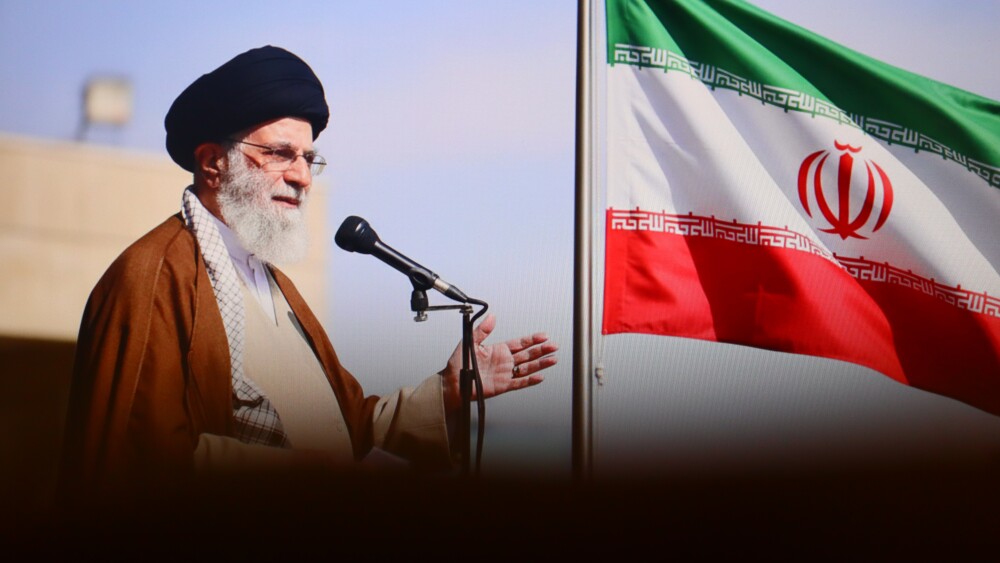by Mardo Soghom
Most Members of the Political Elite Depend on the Corrupt Economy and Could Not Thrive in Democratic or Free-Market Environments
 |
Supreme Leader Ali Khamenei, 86, appears frail and is largely out of sight since Israel’s June 2025 strike on Iranian targets. Shutterstock |
There is a war of wolves in Tehran, Iranian analysts say, as regime insiders turn on each other in unprecedented public attacks and even level veiled criticism at Supreme Leader Ali Khamenei—an aging and weakened autocrat who has ruled the country for more than thirty-six years.
“This moment calls for restraint and magnanimity.”
The political infighting and name-calling have reached such intensity that Ali Larijani, one of Khamenei’s most trusted figures and a former parliament speaker, took to X, the social media platform banned for citizens but routinely used by regime officials for propaganda and settling scores. “Some of the country’s political leaders still fail to grasp the sensitivity and gravity of the current situation and easily engage in disputes with one another. This moment calls for restraint and magnanimity,” the Iraqi-born Larijani wrote on October 30, 2025, adding, “In these circumstances, we must move beyond our differences and work to strengthen national unity.”
Some ordinary citizens responded that the Islamic Republic has faced a grave and sensitive situation since its inception in 1979, yet the authorities have never clarified when criticism is appropriate.
Independent analysts argue that the ongoing political tug-of-war has little to do with real policy debate and everything to do with power and control over economic resources. Since the Israeli air campaign in June 2025, Khamenei has largely disappeared from public view, leaving Iranians unsure who actually runs the country.
The criticism and recrimination began after the June attacks, when Iran’s military power proved incapable of stopping Israel and the United States from destroying its nuclear facilities, air defenses, and other strategic targets. In July, former president Hassan Rouhani criticized the Islamic Revolutionary Guard Corps for pouring money into inefficient military programs. Senior Revolutionary Guard commanders struck back, accusing Rouhani of cutting defense spending during his eight-year presidency (2013-2021). Rouhani also urged a more balanced foreign policy and faulted Russia for pursuing a self-serving and unreliable approach toward Iran.
Hardliners allied with the Islamic Revolutionary Guard Corps have sidelined Rouhani’s circle and the Reform Front over the past several years.
Rouhani’s remarks about Russia provoked parliament speaker Mohammad Bagher Ghalibaf to chastise both Rouhani and former foreign minister Mohammad Javad Zarif. On November 1, 2025, the parliament’s presidium spokesman escalated the confrontation. Abbas Goudarzi accused Rouhani of “disturbing public opinion and undermining national unity” and urged the judiciary to act against Zarif’s “anti-Russian remarks.”
Hardliners allied with the Islamic Revolutionary Guard Corps have sidelined Rouhani’s circle and the Reform Front over the past several years. By 2020, a full year before Rouhani’s presidency ended, they had already taken control of both parliament and the broader political arena through tightly managed elections. The rivalry between these factions, however, dates back much further—to Mahmoud Ahmadinejad’s 2005 election and the rise of the so-called “revolutionary front.”
Two interconnected factors now drive this escalating conflict: who will wield power after Khamenei’s death, and how each faction can protect its wealth and influence from the vengeance of rivals. Everyone can see that Khamenei’s time is running out. At 86, he appears frail and visibly weaker after the humiliating defeat in June.
Most members of the political elite depend on the country’s corrupt, nepotistic economy. For forty-six years, they have known neither genuine political competition nor a functioning market system. They lack the skills to thrive in democratic or free-market environments without the fortunes they have built inside Iran. The cronyism they created punishes entrepreneurship and rewards insiders with monopolies and subsidies.
Many Iranians argue that corruption—more than foreign sanctions—has impoverished the nation.
A recent banking scandal exposed the depth of this corruption. Bank Ayandeh, run by regime insiders who for years borrowed heavily from the Central Bank to fund dubious ventures, finally collapsed in October. Instead of letting it fail, the Central Bank absorbed the institution, sparking a heated national debate on corruption. Even Seyyed Yasser Jebraily, a conservative insider, condemned the system. “Since 2018, nearly one hundred billion dollars of the nation’s capital has been plundered,” he wrote on X. “The foreign currency that should have supported production, employment, and public welfare has instead fallen into the hands of tightly knit circles of power and wealth, turning into spoils of profiteering and betrayal.”
Many Iranians argue that corruption—more than foreign sanctions—has impoverished the nation. They are right, even as some Western diplomats continue to accept Iranian complaints about sanctions at face value. The behavior of regime insiders matters more than their rhetoric. As uncertainty deepens about the post-Khamenei era, regime insiders now scramble to secure their positions and protect their stakes in the crony economy, the real basis for the fortunes and misfortunes of individual Iranians.
Mardo Soghom was a journalist and editorial manager at Radio Free Europe/Radio
Liberty for three decades, overseeing the Iran and Afghanistan services
until 2020, and was chief editor of the Iran International English
website.
Source: https://www.meforum.org/mef-observer/irans-ruling-elite-turn-on-each-other
No comments:
Post a Comment